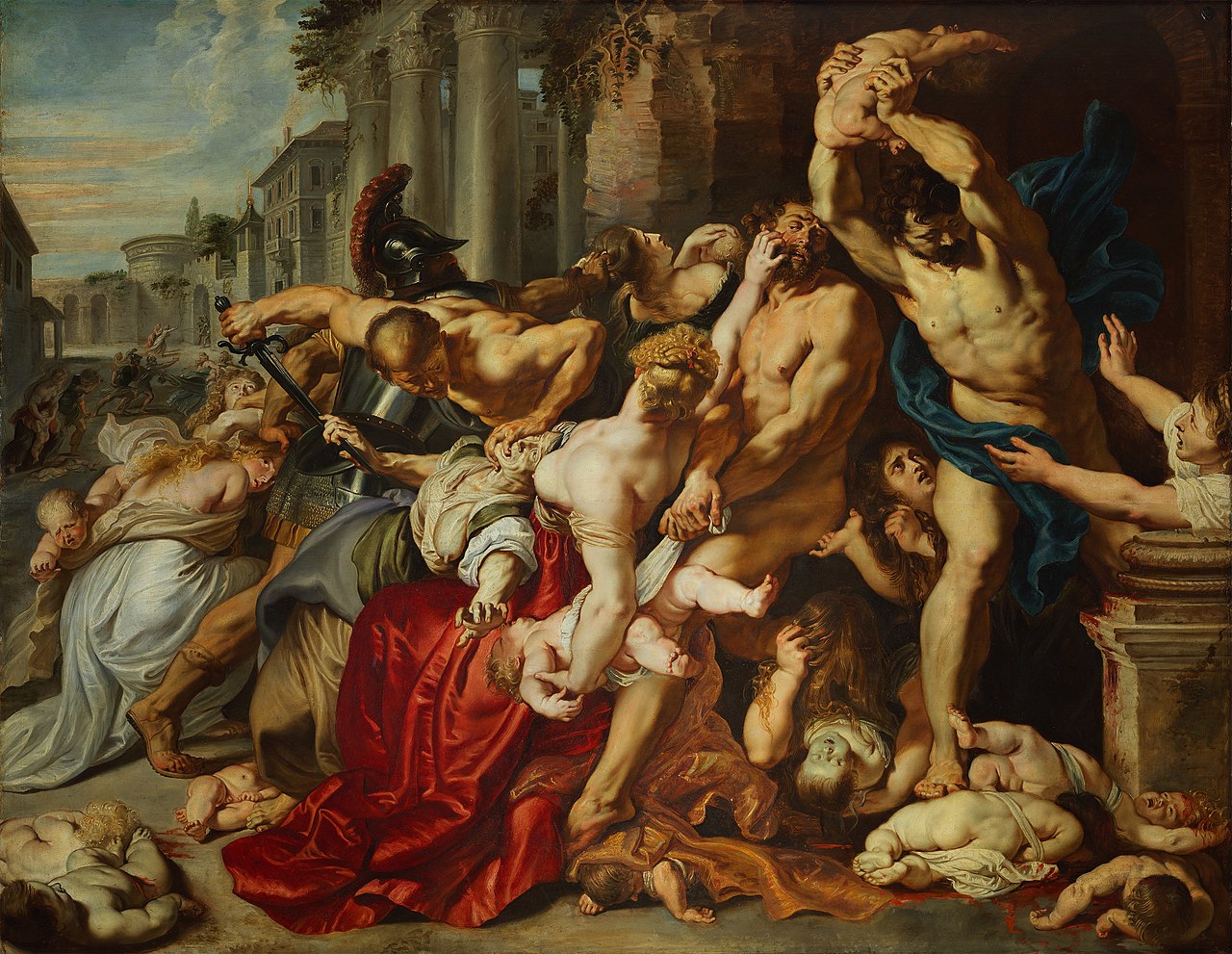Description
The Massacre of the Innocents is a stunning painting by renowned Baroque artist, Peter Paul Rubens, featuring richly detailed figures in an epic 10-foot-wide composition. With realistic emotion and vibrant color, it evokes a powerful storytelling experience.
The painting depicts the biblical story of Roman soldiers executing newborn males in Bethlehem on King Herod's orders. It was painted in the early 17th century after Rubens returned from an eight-year stay in Italy that he spent observing the works of artists such as the Italian Baroque master Caravaggio. The painting became the most expensive Old Master work ever sold when Canadian businessman and art collector Kenneth Thomson bought it for £49.5 million at Sotheby's auction in 2002, before being donated to the Art Gallery of Ontario in 2008, where it is still deployed today.
The Massacre of the Innocents has always been a popular subject in the visual arts, particularly during the Renaissance, when artists rediscovered antiquity and reinterpreted mythological and biblical narratives. The gruesome depiction of infanticide ordered by King Herod to prevent the prophesied new King of the Jews from assuming the throne was performed by numerous masters from different eras, including Giotto di Bondone, Nicolas Poussin, Pieter Brueghel the Elder, and Guidi Reni.
Flemish Baroque artist Peter Paul Rubens made two versions of the biblical story about 25 years apart. In this painting the almost naked soldiers are killing the babies while the mothers try fiercely to save them. The central figure is a woman in a blood-red dress who falls backwards under the weight of an older woman who is about to be impaled by the soldier. She is desperately clawing at another soldier's face with her right hand and barely supporting the baby with her left. It is a struggle for survival. A tug of war where what is at stake is human life. She is pushing the soldier away when she is seen grabbing the baby's loincloth and nearly taking possession of the child.
Along the upper right hand side of the painting, another tragedy is waiting to happen: a baby held aloft by another soldier is about to be thrown to the ground already covered with pale corpses and limbs. But there is hope when the girl, seen by the soldier's left leg, raises her arms to the baby, hoping to catch it. There is a lot going on in this painting, but if she begins by looking at these two groups in the center and on the right: the mother, her son, and the soldier, she will deeply feel the drama of the whole picture.
Rubens masterfully portrayed a wide range of emotions: despair, violence, pain, maternal and ruthless love. At the time he completed The Massacre of the Innocents, he was meant to be a commentary on the political and social situation in the Netherlands, which was in the midst of the Eighty Years' War that began as a revolt for independence. Thus, this table could be a statement of concern against the war.



